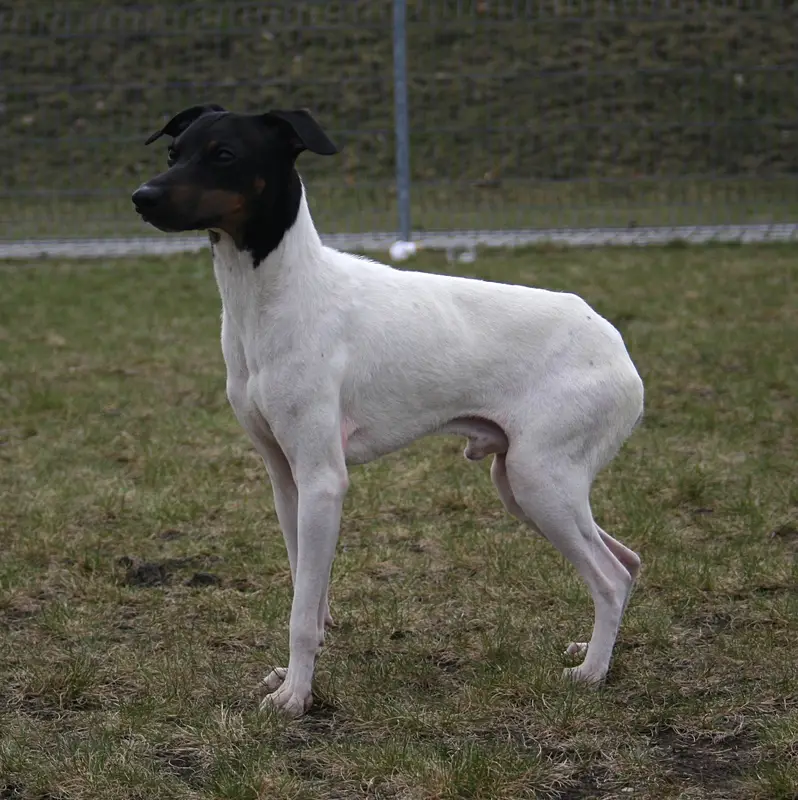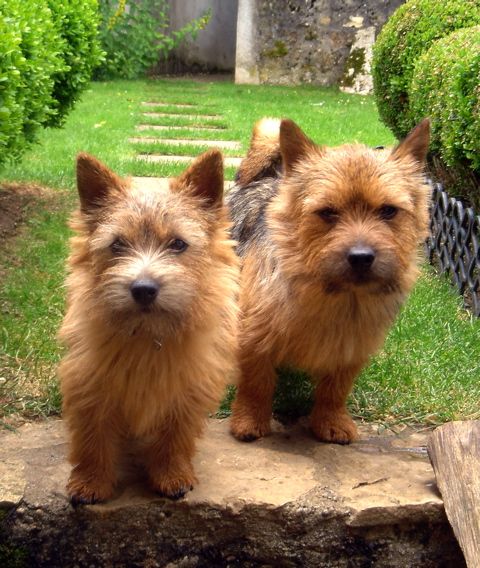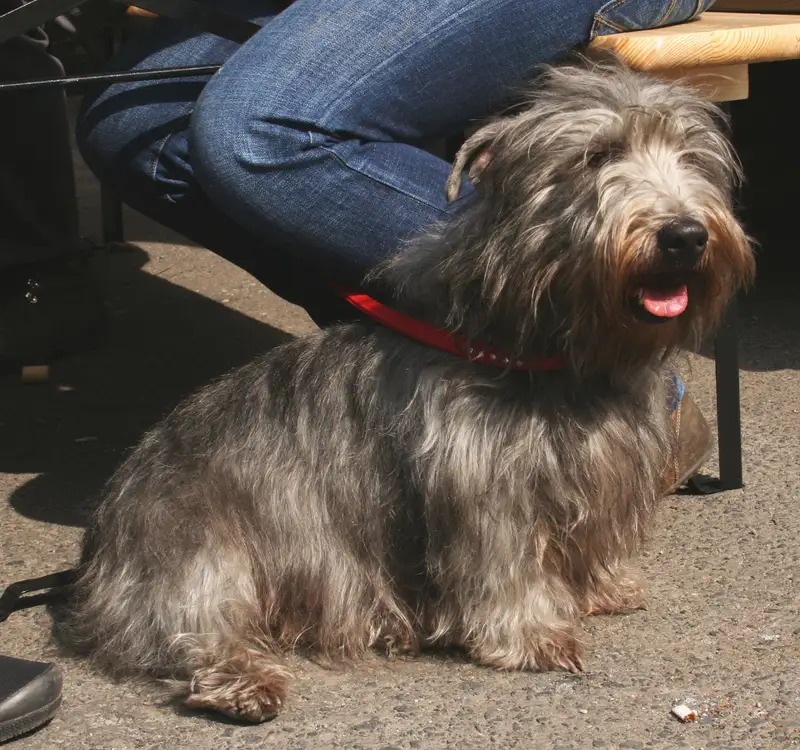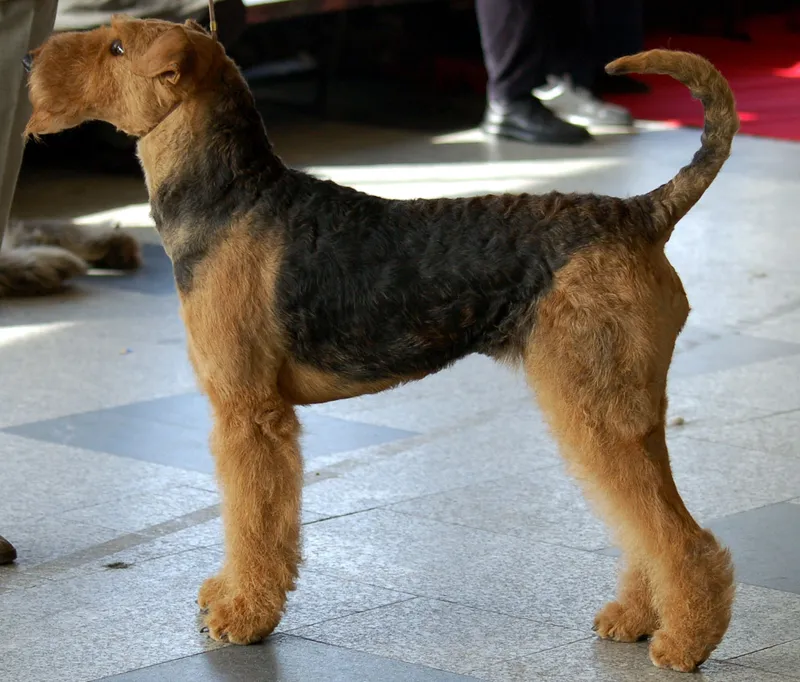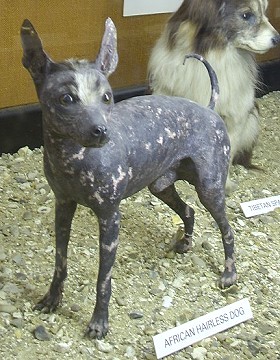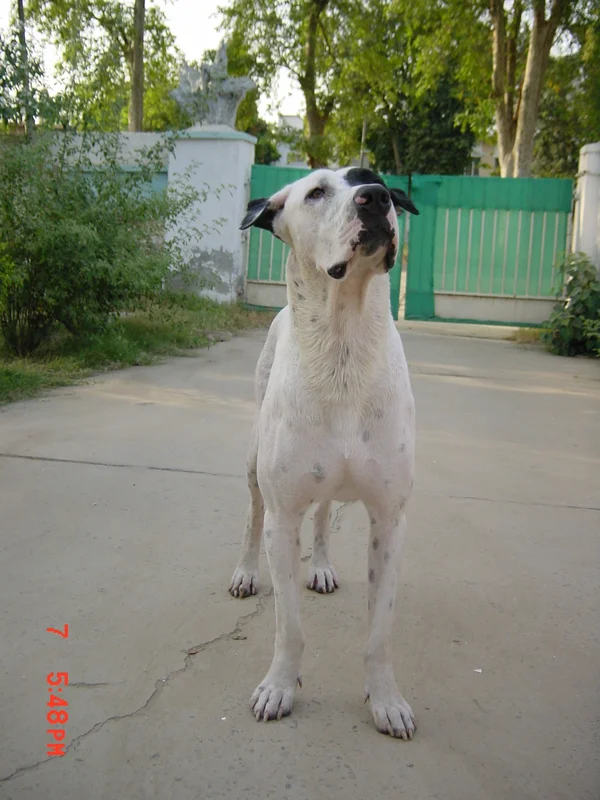Brazilian Terrier
The Brazilian Terrier, or Fox Paulistinha, is a small, energetic breed known for its intelligence and playful nature. Ideal for active families, they excel in vermin control and as loyal companions.
Overview
🐕Breed Overview
✨Key Traits
💡What Makes Brazilian Terrier Special
One of the standout traits of the Brazilian Terrier is its high energy level and playful demeanor. They are known for their agility and love for interactive play, making them suitable for families who enjoy outdoor activities.
Their intelligence allows them to learn commands and tricks quickly, but they can also be stubborn if not properly trained. Their strong prey drive means they may chase smaller animals, so supervision is necessary.
Brazilian Terriers are also known for their loyalty and affection towards their families, making them great companions. Their alertness and protective instincts ensure they are reliable watchdogs, always ready to alert their owners to potential threats.
The Brazilian Terrier, affectionately known as the Fox Paulistinha, is a small yet spirited breed that originated in Brazil. Standing between 13 to 16 inches tall and weighing around 22 pounds, this breed is characterized by its tri-color coat, which typically features a combination of white, tan, and black. With a history rooted in vermin control, the Brazilian Terrier has evolved into a beloved companion and watchdog, known for its intelligence and playful nature.
These dogs are lively and require regular exercise, making them ideal for active families who can provide the physical and mental stimulation they crave. Their affectionate demeanor and playful spirit make them great companions, while their alertness and protective instincts ensure they are reliable watchdogs. However, potential owners should be aware of their strong prey drive and tendency to be reserved around strangers, necessitating early socialization and training.
Overall, the Brazilian Terrier is a delightful breed that thrives in environments where they can engage in various activities, from agility training to simply playing fetch in the yard. With proper care and attention, they can be a loyal and loving addition to any home.
🎉Fun Facts
Despite their small size, Brazilian Terriers have a strong prey drive and should not be trusted with small animals without supervision.
The Brazilian Terrier is often referred to as the Fox Paulistinha, which translates to 'Little Fox from São Paulo.'
They are known for their agility and are often seen participating in dog sports like agility and obedience competitions.
Breed Characteristics
Family & Friends
Good Behavior
Get Up & Go
Household Harmony
Temperament & Personality
✨Key Traits
🐕Core Temperament
The Brazilian Terrier is characterized by its alert and intelligent temperament. They are friendly and affectionate with their families, enjoying playtime and interaction.
However, they can be reserved around strangers, requiring proper socialization to ensure they are well-adjusted. Their strong hunting instincts make them fearless and tenacious, so they should not be trusted with small animals without supervision.
Brazilian Terriers thrive in active environments where they can engage in physical and mental challenges, and they respond well to consistent training and leadership. Overall, they are spirited and loyal companions that make excellent family pets.
💫Personality Profile
Brazilian Terriers are known for their lively and intelligent personalities. They are affectionate with their families and enjoy playtime, making them excellent companions for active households.
While they can be reserved around strangers, they are alert and will bark to alert their owners of any unusual activity. Their playful nature often leads them to dig and explore, so providing them with a secure area to play is essential.
They thrive on mental and physical challenges, and their tenacity makes them excellent watchdogs. However, they require a confident owner to provide consistent training and leadership to prevent willfulness.
🔊Vocal Tendencies
Brazilian Terriers have a moderate barking tendency. They will bark to alert their owners of strangers or unusual activity but are not known to be excessive barkers.
Their vocalizations can vary depending on their mood, with playful barks during playtime and alert barks when they sense something amiss. While they are generally not prone to excessive barking, proper training and socialization can help manage their vocal tendencies.
Affection & Social Traits
Energy & Activity
Communication Style
Care Requirements
🏃♂️Exercise Requirements
Daily Exercise
The Brazilian Terrier is a lively and energetic breed that requires regular physical and mental stimulation to thrive. Ideally, they should engage in at least 60 to 90 minutes of exercise each day, which can include activities such as brisk walks, playtime in a secure yard, and interactive games like fetch or tug-of-war.
This breed enjoys activities that challenge their agility and intelligence, making dog sports like agility training or obedience classes excellent options. Puppies may require shorter, more frequent exercise sessions to accommodate their developing bodies, while senior dogs may benefit from gentler activities to avoid strain.
Regular exercise not only helps maintain a healthy weight but also prevents behavioral issues that can arise from boredom or pent-up energy. Insufficient exercise can lead to destructive behaviors, anxiety, and restlessness, making it crucial for owners to commit to a consistent exercise routine.
Preferred Activities
🏠Living & Adaptability
Space Requirements
Brazilian Terriers thrive in homes with ample outdoor space to run and play. While they can adapt to apartment living, it is essential to provide them with daily opportunities for exercise and mental stimulation.
A small yard may suffice if the owner is committed to regular walks and playtime. However, larger spaces are ideal, as these dogs are active and require room to explore.
Owners in smaller living situations should ensure they have a structured routine that includes outdoor activities to prevent boredom and potential destructive behavior.
Climate Preference
🍲Feeding Guide
Schedule
Food Types
Portion Size
Special Nutritional Needs
Brazilian Terriers do not have specific dietary restrictions, but it is essential to provide a balanced diet that meets their energy needs. High-quality dog food formulated for small breeds is recommended to ensure they receive adequate nutrients.
Owners should monitor their dog's weight and adjust portion sizes accordingly, especially if they are less active. Regular veterinary check-ups can help identify any potential food sensitivities or allergies.
✨Grooming Requirements
Grooming Overview
The Brazilian Terrier has a short, tri-color coat that requires minimal grooming. Regular brushing once a week is sufficient to remove loose hair and keep the coat healthy.
Bathing should be done as needed, usually every few months or when the dog gets particularly dirty. Routine care should also include regular nail trimming, ear cleaning, and dental hygiene to maintain overall health.
Their low grooming needs make them an excellent choice for owners looking for a breed that is easy to care for in terms of coat maintenance.
Care Schedule
Brush weekly; bathe as needed (every few months); trim nails every 2-4 weeks.
Health Profile
⚕️Health Care
Regular health care is crucial for the Brazilian Terrier's longevity. Routine veterinary check-ups, vaccinations, and preventive treatments can help detect health issues early and maintain overall well-being.
Owners should also prioritize dental care, as dental disease can lead to more severe health problems. By staying proactive with health care, owners can significantly enhance their dog's quality of life and lifespan.
Health Issues Overview
⏳Average Lifespan
Genetic Factors
Genetics play a significant role in the Brazilian Terrier's lifespan, with hereditary health issues such as hip dysplasia and patellar luxation being common concerns. Responsible breeding practices that prioritize health and genetic diversity can help reduce the incidence of these conditions.
Potential owners should seek reputable breeders who conduct health screenings and provide transparency about the lineage of their puppies. Understanding the genetic background of a dog can help owners anticipate potential health issues and make informed decisions regarding care and management.
Living Conditions
The Brazilian Terrier's lifespan can be influenced by various environmental factors, including housing conditions, climate, and social interactions. They thrive in active households where they receive regular exercise and mental stimulation.
A secure outdoor space is essential for their physical activity, while social interactions with humans and other pets can enhance their emotional well-being. Exposure to a stimulating environment can promote longevity, while a lack of activity and socialization may lead to behavioral issues and a shorter lifespan.
🏥Common Health Issues
Hip Dysplasia
Warning Signs
🔬Diagnosis
Veterinarians typically diagnose hip dysplasia through physical examinations and X-rays.
💊Treatment
Treatment options may include weight management, physical therapy, or surgery in severe cases.
📝Management Tips
Maintain a healthy weight, provide regular exercise, and consult a veterinarian for joint supplements if necessary.
Patellar Luxation
Warning Signs
🔬Diagnosis
Diagnosis is usually made through physical examination and observation of symptoms.
💊Treatment
Treatment may involve weight management, physical therapy, or surgery in severe cases.
📝Management Tips
Maintain a healthy weight and provide regular exercise to strengthen the muscles around the knee.
🛡️Preventive Care
🔬Hip Evaluation
Hip Evaluation assesses the dog's hip joints for signs of dysplasia, which can lead to arthritis and mobility issues.
📅 Recommended at 12 months and then every 2 years thereafter.
🔬Patellar Luxation Assessment
Patellar Luxation Assessment checks for knee joint stability and potential luxation, which can affect mobility.
📅 Recommended at 12 months and then every 2 years thereafter.
Training
🧠Intelligence & Trainability
💪Work Drive
Brazilian Terriers have a strong work drive, stemming from their history as hunting and vermin control dogs. They thrive when given tasks to complete, whether it's participating in dog sports, engaging in obedience training, or simply playing interactive games with their owners.
Providing them with mental challenges, such as puzzle toys or scent work, is essential for their overall well-being. Without sufficient mental and physical engagement, they may become bored and exhibit undesirable behaviors.
Owners should aim to incorporate a variety of activities into their routine to keep their Brazilian Terrier stimulated and happy.
⚠️Training Considerations
Brazilian Terriers can exhibit willful behavior if not provided with a firm and consistent leader. Their strong hunting instincts may lead them to chase smaller animals, requiring careful supervision around pets like cats or small dogs.
Additionally, they may become bored and destructive if not adequately stimulated, making it essential for owners to engage them in regular training and interactive play. Socialization is crucial to help them develop good manners around other dogs and strangers, as they can be reserved with unfamiliar people.
Training should focus on positive reinforcement techniques to encourage desired behaviors and strengthen the bond between the dog and owner.
📝Training Tips
Training a Brazilian Terrier requires patience and consistency. Start with basic obedience commands, using positive reinforcement methods such as treats and praise to motivate them.
Socialization is vital, so expose them to various environments, people, and other animals from a young age. Incorporate mental stimulation into training sessions by using puzzle toys or engaging in agility exercises.
Keep training sessions short and fun to maintain their interest, and gradually increase the complexity of tasks as they learn. Regular practice and positive experiences will help them become well-rounded and obedient companions.
History & Heritage
📜Origin Story
The Brazilian Terrier, or Fox Paulistinha, originated in Brazil, where it was developed from a mix of terrier breeds brought by European settlers. The breed's ancestors, including the Jack Russell Terrier and Fox Terrier, were selected for their hunting abilities and adaptability to the Brazilian environment.
As these dogs were bred for their skills in vermin control, they became essential companions on farms and in homes. Their tenacity and intelligence made them effective hunters, and their friendly nature endeared them to families.
The Brazilian Terrier's unique traits and history reflect the cultural blend of Brazil, showcasing how imported breeds can evolve into distinct local varieties.
⏳Development History
The Brazilian Terrier's development can be traced back to the 1800s when European immigrants brought terrier breeds such as the Jack Russell Terrier, Fox Terrier, and Miniature Pinscher to Brazil. These breeds were crossed to create a dog that could effectively control vermin while also serving as a loyal companion.
Over the years, the Brazilian Terrier has maintained its working dog roots while also becoming a beloved family pet. The breed's characteristics have been shaped by its environment and the needs of its owners, leading to a dog that is both spirited and adaptable.
Despite its popularity in Brazil, the breed remains relatively unknown outside its home country, with limited recognition by major kennel clubs.
🛡️Purpose & Historical Role
Historically, the Brazilian Terrier was bred for vermin control on farms, where they excelled at hunting small animals like rats and mice. Their agility and intelligence made them effective watchdogs, alerting their owners to any intruders.
Over time, they have also become popular as family pets, known for their affectionate nature and playful demeanor. Today, they continue to serve as companions and protectors, maintaining their role in both rural and urban settings.
🏺Cultural Significance
The Brazilian Terrier, known locally as Fox Paulistinha, holds a special place in Brazilian culture as one of the country's native breeds. Developed from various terrier breeds brought to Brazil by European immigrants, this breed has been integral in agricultural settings, particularly on farms where they were employed for vermin control.
Their tenacity and intelligence have made them valuable companions and watchdogs, contributing to their popularity in Brazilian households. The breed's unique characteristics and adaptability to the Brazilian climate reflect the country's diverse heritage and the influence of European dog breeds on local canine populations.
Conservation Status
This breed is less common but has stable populations in certain regions.




